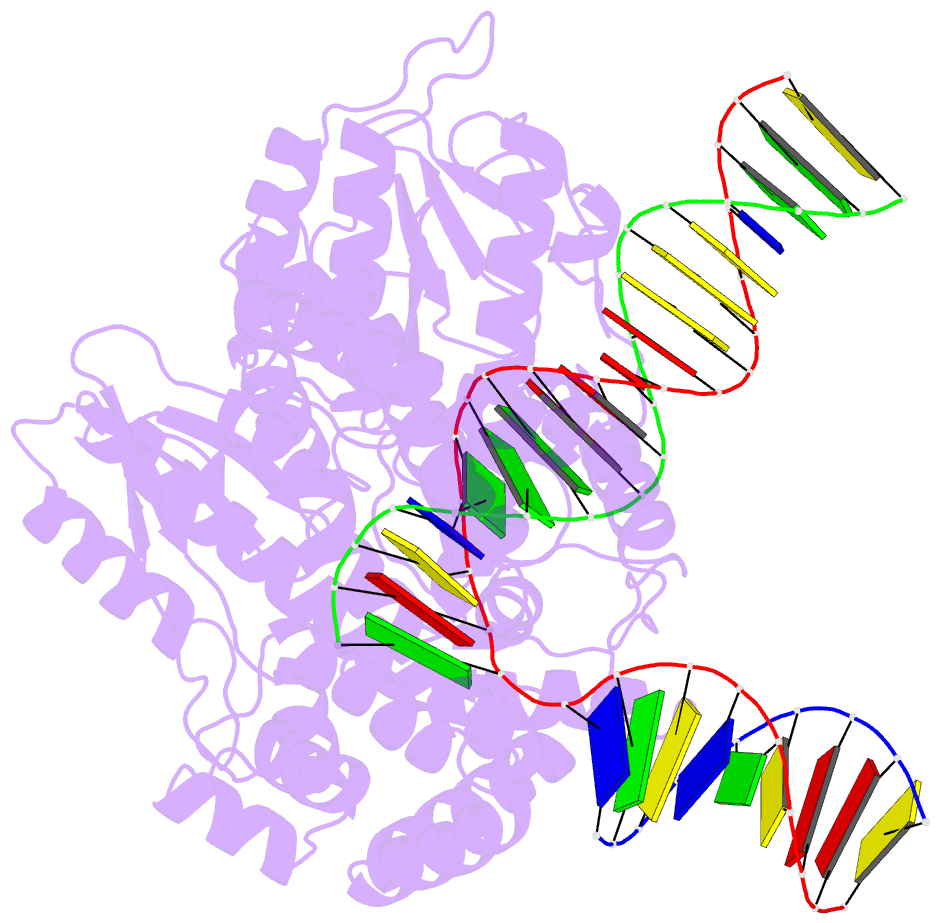Summary information and primary citation
- PDB-id
- 8oo6; SNAP-derived features in text and JSON formats;
DNAproDB
- Class
- DNA binding protein
- Method
- cryo-EM (4.3 Å)
- Summary
- Pol i bound to extended and displaced DNA section - closed conformation
- Reference
- Botto MM, Borsellini A, Lamers MH (2023): "A four-point molecular handover during Okazaki maturation." Nat.Struct.Mol.Biol., 30, 1505-1515. doi: 10.1038/s41594-023-01071-y.
- Abstract
- DNA replication introduces thousands of RNA primers into the lagging strand that need to be removed for replication to be completed. In Escherichia coli when the replicative DNA polymerase Pol IIIα terminates at a previously synthesized RNA primer, DNA Pol I takes over and continues DNA synthesis while displacing the downstream RNA primer. The displaced primer is subsequently excised by an endonuclease, followed by the sealing of the nick by a DNA ligase. Yet how the sequential actions of Pol IIIα, Pol I polymerase, Pol I endonuclease and DNA ligase are coordinated is poorly defined. Here we show that each enzymatic activity prepares the DNA substrate for the next activity, creating an efficient four-point molecular handover. The cryogenic-electron microscopy structure of Pol I bound to a DNA substrate with both an upstream and downstream primer reveals how it displaces the primer in a manner analogous to the monomeric helicases. Moreover, we find that in addition to its flap-directed nuclease activity, the endonuclease domain of Pol I also specifically cuts at the RNA-DNA junction, thus marking the end of the RNA primer and creating a 5' end that is a suitable substrate for the ligase activity of LigA once all RNA has been removed.





